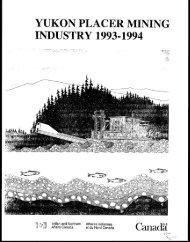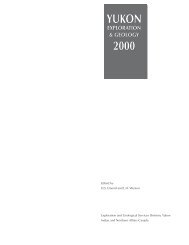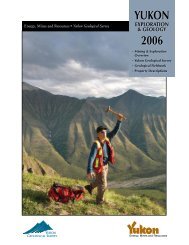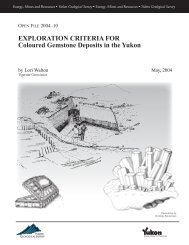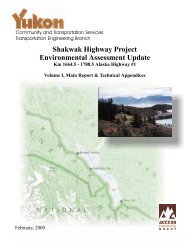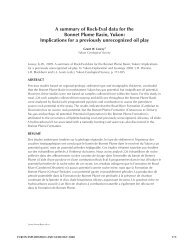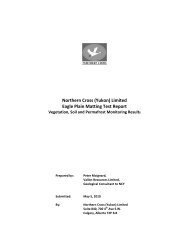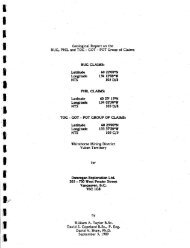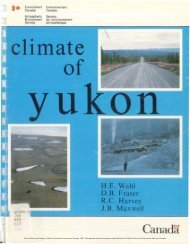WhiteCAP_Plan_01SEPT..
WhiteCAP_Plan_01SEPT..
WhiteCAP_Plan_01SEPT..
You also want an ePaper? Increase the reach of your titles
YUMPU automatically turns print PDFs into web optimized ePapers that Google loves.
NCE <strong>WhiteCAP</strong> Environmental History<br />
2.0 Methods<br />
Evidence of environmental stress in Whitehorse was principally gathered from the<br />
archives of the two local newspapers; the Whitehorse Star, and the Yukon News. About<br />
50 articles from 1930 to 2009 were examined to determine the extent, influence, and<br />
repercussions of historic extreme natural events. Additional information was gathered<br />
from relevant Yukon Government and City of Whitehorse departments.<br />
The environmental stresses experienced in Whitehorse are classed into three categories<br />
commonly influenced by climate conditions: forest fires, flooding, and weather<br />
fluctuations. This last category was further subdivided into ice, weather variability, and<br />
snow. Historic environmental stresses are therefore presented in six categories. For<br />
each category, the causes, impacts and community responses are reported for each<br />
environmental stress. Whenever possible, resulting monetary costs have been adjusted<br />
to 2009 Canadian dollar values.<br />
3.0 Whitehorse Environmental Stresses 1930-2009<br />
3.1 Forest Fire<br />
Forest fires are uncontrolled fires occurring in the bush and countryside. They are the<br />
most important and common environmental stress experienced by Whitehorse residents.<br />
The behaviour and impact of a forest fire depends on a combination of factors such as<br />
available fuels, physical setting, and weather.<br />
There are many examples of forest fire incidents during the 1930-2009 period. The most<br />
prominent fire occurred in June 1958 and burned a significant portion of the Ibex Valley.<br />
Strong winds pushed the blaze towards Whitehorse, forcing an evacuation; in part,<br />
caused by insufficient community response capacity. Some residents never returned to<br />
the area. The 400 square mile (~103,000 ha) burn was only stopped by precipitation<br />
from a timely storm. The potentially catastrophic effects of the fire continue to linger in<br />
the memory of the community. Smaller forest fires tend to cause more localized<br />
evacuations and damage. For example, in June 1969, Porter Creek and Crestview<br />
subdivisions were almost destroyed by a fire. In May 1970, Riverdale was threatened by<br />
a fire that burned 650 acres and forced residents to evacuate. Another fire threatened<br />
residents living east of Lake Laberge in 1978, burning 1359 acres. The Haeckel Hill<br />
blaze in 1991 also occurred within City limits. Another fire in 1991 affected 1500ha,<br />
forcing the evacuation of the Echo Valley subdivision.<br />
3.1.1 Causes of Forest Fires<br />
Fires are typically started by one of two sources, those occurring naturally and those<br />
stemming from human activity. Most fires in Whitehorse are caused by human<br />
negligence (Yukon Wildland Fire Management 2010). Careless campers and hunters,<br />
vandalism, and industrial activities are all cited as the main causes of forest fires. In the<br />
winter, fires can be caused by electrical shorts in the wiring of houses or by chimney<br />
fires. Wood heat is also a potential source of fire, especially during cold weather when<br />
large fires are not well supervised (Yukon Wildland Fire Management). In January 1956,<br />
sixteen phone calls were made to the fire department due to strained boilers and<br />
chimneys catching fire, causing structural damage to several homes.<br />
D.2



